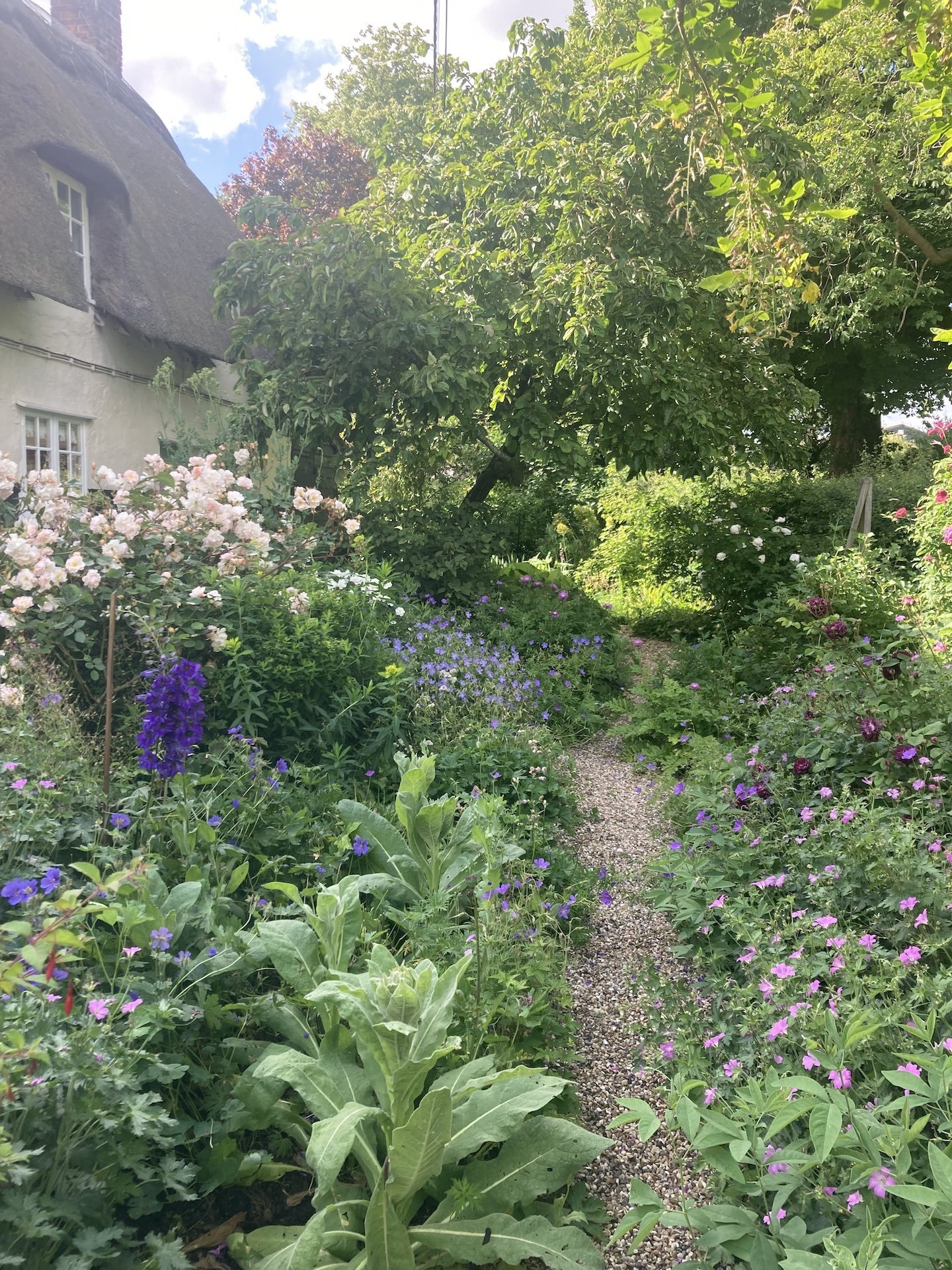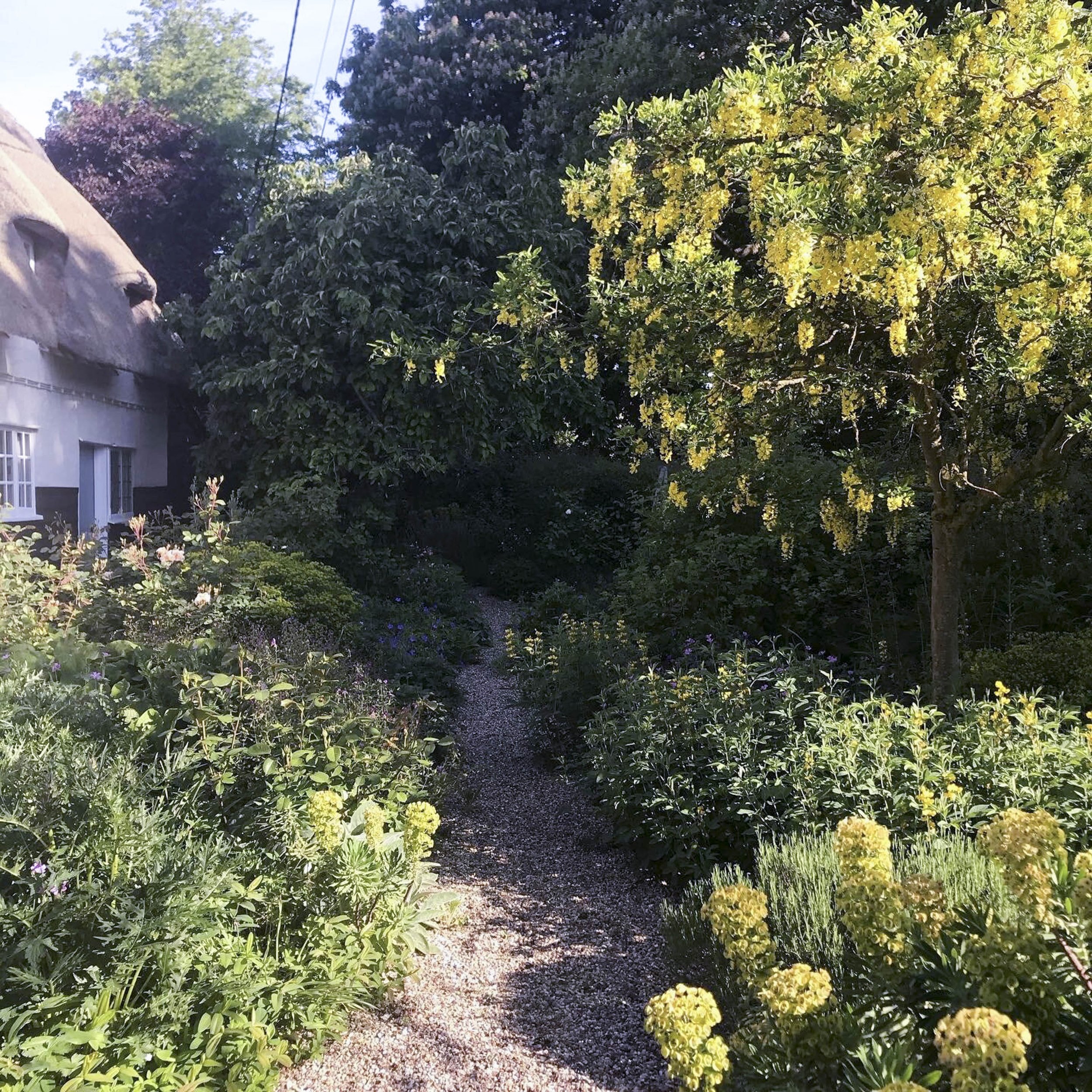Cottage Garden
North Essex
2010 - current

My own romantic, and constantly evolving, country garden.
This is my space for experimentation where I observe closely how plants grow and interact over time.
It has taught—and continues to teach—me a great deal.

Dense layers of planting help to suppress weeds and conserve moisture in the soil.
Gravel gardening for water conservation
With a nod to a traditional cottage garden there is an abundance of roses and perennials as well as edibles; two espalier apple trees, a mature quince, a morello cherry and Victoria plum as well as gooseberry bushes, red, white and black currant bushes and several vegetable beds.
However, unlike a traditional cottage garden, the front garden has now been developed as a gravel garden since that is more resilient to climate change.

Thatched cottage front garden with roses

Front garden with Laburnum tree with yellow flowers and herbaceous planting including bearded irses and Euphorbia characias subsp. wulfenii
A species-rich, naturalistic garden
I like to encourage self-seeding, editing out or moving the seedlings if necessary. Euphorbia characias, Oenothera biennis, Primula vulgaris, Primula veris, Digitalis purpurea, Papaver somniferum, Helleborus orientalis, Helleborus foetidus, Lunaria annua and Salvia sclarea regularly seed themselves around the garden.

Front cottage garden with Laburnum tree in flower underplanted with yellow Thermopsis
An arch supports Wisteria floribunda ‘Alba’ and frames a topiarised yew that forms a focal point in the garden. Lavender lines the pathway with mixed herbaceous perennials opposite. Flowers for every season keeping pollinators happy.
Sambucus nigra ‘Black Lace’

“I put plants on a stage and let them perform. You can’t control the planting, just conduct it.”
The cottage garden in winter
Variety and diversity of plant species are key to providing nectar for pollinators throughout the year—as well as creating wildlife habitats by leaving seed heads of perennials and grasses and only cutting them back in late winter/early spring.
The architectural seed heads of Cynara cardunculus, Phlomis russeliana, Digitalis, Acanthus mollis, Lunaria annua and Papaver are also an important aesthetic element of the garden in winter.

My Gardening Life
Read more about my training, my history as a gardener and my previous career as a curator of contemporary art.



